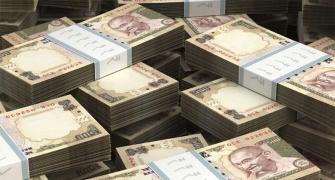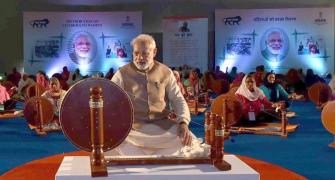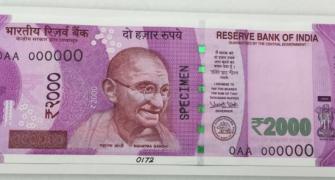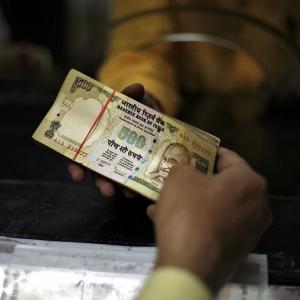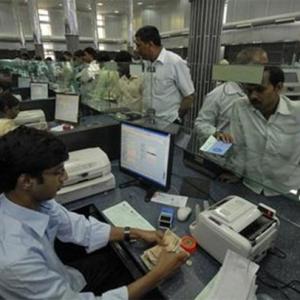If the RBI has to replace the entire stock of Rs 1,000 and Rs 500 notes with Rs 100 ones, the cost would be more than Rs 10,000 crore.
Anup Roy reports on the economics of printing money.
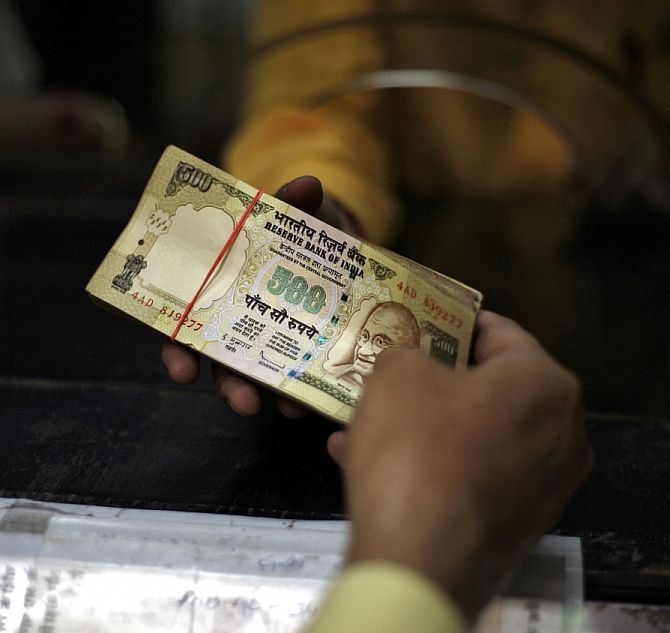
New notes are issued by the Reserve Bank of India's department of currency management.
It gets the notes from four presses. The Security Printing and Minting Corporation of India has presses at Nashik in Maharashtra and Dewas in Madhya Pradesh.
The other two are owned by the RBI through a subsidiary, the Bharatiya Reserve Bank Note Mudran, at Mysuru, Karnataka, and Salboni in Bengal.
Printing cost varies. That for a Rs 1,000 note at the Bharatiya Reserve Bank Note Mudran is Rs 2.67 each; at the Security Printing and Minting Corporation of India, Rs 3.15.
The cost of printing Rs 100 notes in these is Rs 1.20 and Rs 1.41 apiece, respectively.
Coins are made at four government-owned mints -- at Mumbai, Hyderabad, Kolkata and Noida.
When the denomination of the notes rises, the cost to the face value dips.
For example, it is cost-effective to print a Rs 1,000 note at Rs 3.15, instead of printing ten Rs 100 notes and incurring Rs 14.1 for the same value.
That might explain why a little more than 80% of the value of currency in circulation is of high-value notes.
According to RBI's annual report, at the end of March, there were 6.3 billion of Rs 1,000 notes, and 15.7 billion of Rs 500 notes -- 7% and 17.4% of those in circulation, respectively.
In comparison, there were 15.8 bn of Rs 100 notes, about 17.5% of the notes in circulation (90 bn).
If the RBI has to replace the entire stock of Rs 1,000 and Rs 500 notes with Rs 100 ones, the cost would be more than Rs 10,000 crore.
The average age of the notes are usually less than a year, but depend on usage. Lower the value, higher the usage.
For example, a Rs 10 note could last no more than eight to 10 months, whereas a Rs 1,000 note could remain fresh for a long time, as these tend to be stored and used carefully.
The currency paper is composed of cotton and cotton rag. The papers are now largely made in India.
The RBI Act allows the central bank to publish notes of up to Rs 5,000 and Rs 10,000 denominations, but not more.
The government has to approve before those notes are introduced.
The highest denomination note printed were Rs 10,000 ones, in 1938 and in 1954. These were demonetised in 1946 and again in 1978.
Notes received back from circulation are examined and those not fit for reissue are destroyed.
Coins do not come back from circulation, except those which are withdrawn.
The RBI disposed 16.4 bn of soiled notes and issued fresh ones against these in 2015-2016. It did not disclose the cost.
While a soiled bank note can be exchanged for full value, a mutilated note can be exchanged for full value or half, depending on the degree of mutilation. The cost of sorting these is not known.
The RBI indicates the volume and value of banknotes to be printed each year, based on demand.
'The amount of notes to be printed broadly depends on the demand, the economy's growth, replacement of soiled ones, reserve stock requirements, etc,' it says.


